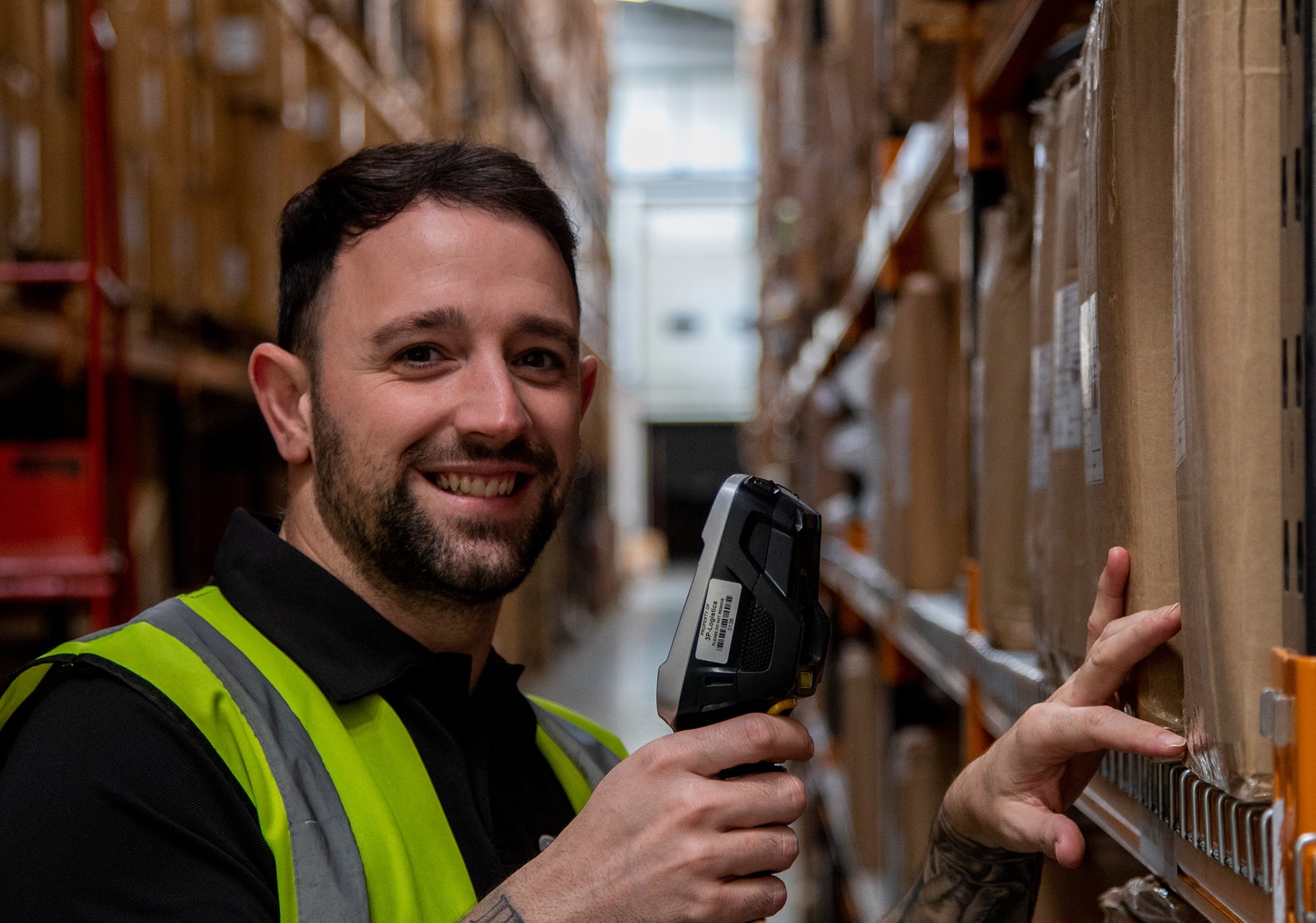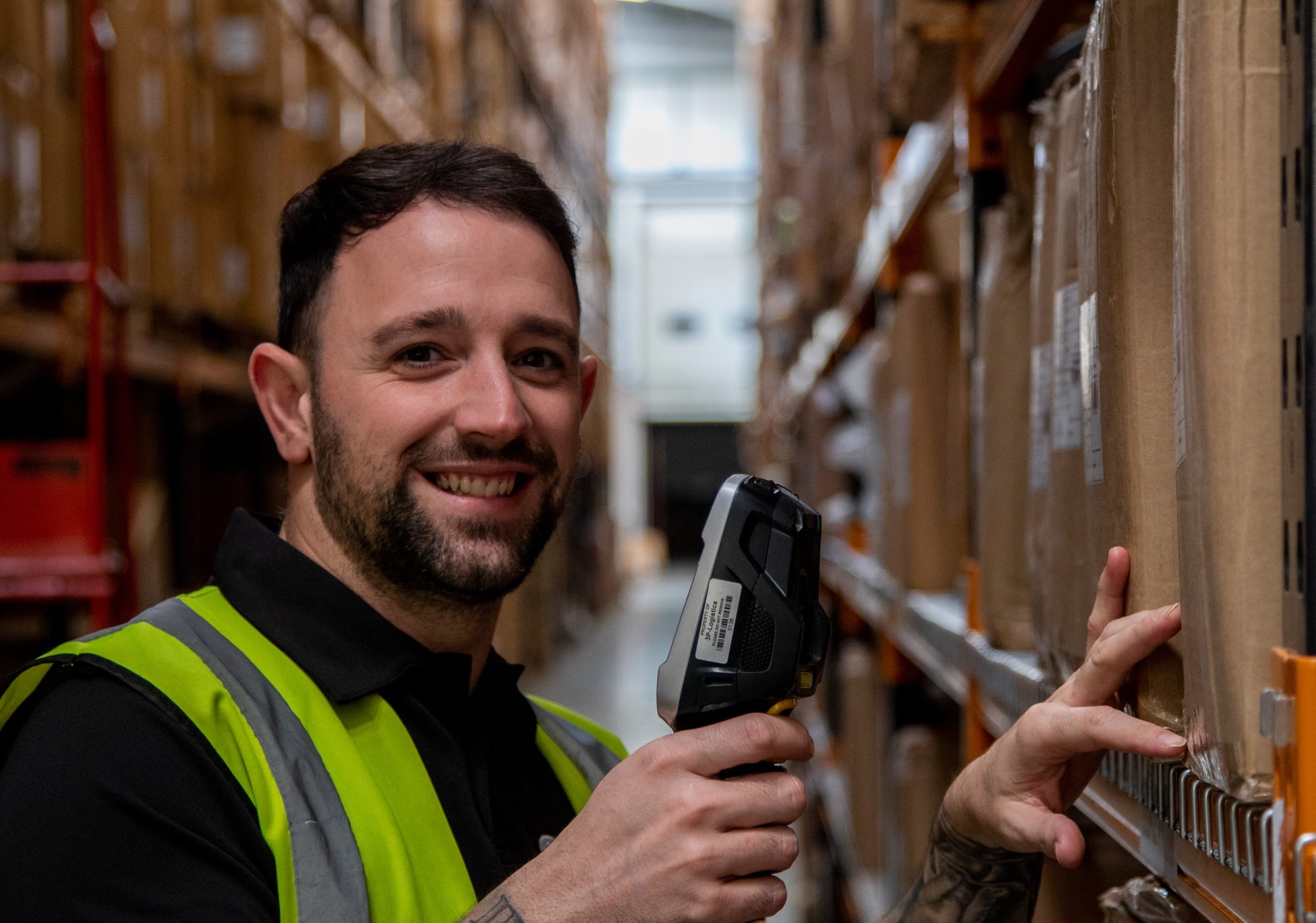When the majority of consumers tear open the packaging of their new purchases they give little, if any, thought to how their order was picked and packed. But the pick and pack process is actually an important part of an eCommerce retailer’s overall fulfilment pathway. If you’re wondering how the best eCommerce retailers structure their pick and pack process, and what actually happens during the process, keep reading…👇
What is the pick and pack process?
Before we delve into how the pick and pack process works, we’ll define what it actually is.
As the name suggests, the pick and pack process is the process of:
- Picking the correct items for a customer’s order.
- Packing those items into a suitable box along with packing material, documentation and labelling it.
At many eCommerce retailers, the pick and pack process is carried out by a dedicated team in their warehouse(s).
So, with the pick and pack process defined – how is it actually carried out? We’ll answer that question in the next section of this article.
How does the pick and pack process work?
Like any process, you will find variations from business to business, however we’ve set out below the most common way in which the pick and pack process works at eCommerce retailers:
- A customer places an order on an eCommerce retailer’s website.
- Once this order has cleared, it is transmitted to the eCommerce retailer’s fulfilment warehouse.
- A packing slip (or picking list) is generated for the order.
- This packing slip will be printed with barcodes or serial numbers that will help the packer to find the correct items for the order.
- The packer will pick up the items from the relevant parts of the warehouse (at many eCommerce retailers, packers will pick items for multiple orders in one go).
- The packer takes the items to a packing station. This is usually a dedicated part of the warehouse where orders will be packed into suitable boxes along with packing materials, documentation and delivery labels.
- The packed orders are then sorted in the delivery bay (they’ll normally be divided up by shipping carrier or region).
- The eCommerce company’s carrier partners then deliver the packed orders to happy customers!
So, that’s how the pick and pack process works at many of the biggest, most successful eCommerce retailers.
It all sounds quite straightforward, doesn’t it?!
Well, the pick and pack process isn’t without its challenges. We’ll cover these next.
What are the challenges of the pick and pack process?
The pick and pack process involves many variables; and therein lies the challenge of getting this process right!
To really nail your pick and pack process, you need high levels of coordination, organisation and attention to detail.
This starts from the very beginning of the process – ensuring the customer’s order is correct and sent to the proper fulfilment warehouse – through to picking the correct items for the order and making sure they are packed in a way which will prevent damage during transit.
If you have a poorly organised warehouse or an insufficiently-trained pick and pack team, you can quickly find that your pick and pack process falls apart.
The benefits of getting the pick and process right
Sure, there are some fairly considerable challenges involved in getting the pick and pack process right, but then the benefits of getting it right are even bigger!
The pick and pack process can be one of the most costly parts of your fulfilment pathway. Really nail the process and ensure it is smooth, organised and efficient, and you can significantly reduce your overall cost of fulfilment.
And, we’ve already guessed your next question – “How can I improve my pick and pack process?”
Well, we’ve set out a few easy-to-execute tips below which should deliver quick improvements to your pick and pack process:
- When your team is packing an order, they should double-check each item against the packing slip (or re-scan the item if you are using inventory management software). This will significantly reduce the number of incorrect items that end up being shipped to customers.
- Use pick and pack software or a detailed guide to help packers select the right size and type of box for each order. This will not only ensure that orders are correctly packed and less likely to suffer damage, but it will speed up the packing process.
- Set out packing instructions. For each of your main order categories, your packers should know exactly what types of packing materials should be used, and how the order should be packed. Again, this will not only reduce damage to orders in transit, but it will speed up the packing process.
- Outsource your pick and pack operation to a 3PL. If your eCommerce business is growing rapidly, it can be difficult to stay on top of your order fulfilment at the best of times. If you want to not just stay on top of your pick and pack process, but improve it, it makes sense to outsource it to a dedicated specialist.
Put these things into practice and you’ll go a long way towards improving the accuracy and efficiency of your current pick and pack process.
What are the different pick and pack processes?
If you’ve tried all of the above and you’re still looking at ways to improve the way your orders are picked and packed, then you may want to try one of the alternative pick and pack processes that we’ve outlined below.
Piece picking
This is one of the most common pick and pack strategies – especially amongst new, start-up or small eCommerce retailers.
Piece picking is a very straightforward process which involves the packer picking one order at a time, as and when they are received by the warehouse. The worker will simply walk around the warehouse selecting each item until the order is complete. They’ll then pack the order.
Whilst straightforward, the piece picking strategy is generally inefficient at larger scales. It’s best suited to small, early-stage eCommerce businesses.
Batch picking
Once your business has grown and your fulfilment warehouse is much bigger, you may want to move to a batch picking strategy.
Under this strategy, a worker will still pick items for individual orders, but they will be doing this for multiple orders at once.
Zone picking
This is another pick and pack strategy which is suited to larger-scale warehouses. When you’re dealing with significant volumes of orders, then zone picking can help.
With zone picking, your fulfilment warehouse will be divided into a series of zones.
Packers are assigned to each zone and must only pick items from their designated zone. If an order requires items that are located in another zone, then it will be passed (in a box or via a conveyor belt) from one zone to another.
Zone picking is significantly more efficient than either piece or batch picking but is more geared towards larger eCommerce operations.
Wave picking
Wave picking is a blend of zone and batch picking. Under this strategy, your packers will be assigned to a zone, but will pick orders in batches rather than individually. As with zone packing, if an order requires items from another zone, then it will be passed over to it (the workers must stay within their designated zone).
As you can see, there are many different ways that you can ‘hone’ your pick and pack process. Whenever your eCommerce business experiences a significant burst of growth, it can pay to reassess your pick and pack process and move to an alternative strategy to improve accuracy and efficiency.
Pick and pack with 3PL
Getting the pick and pack process right can be a considerable challenge. Whether you’re a small eCommerce retailer or a giant, customer expectations remain the same. They want their order to be correct, they want it to arrive suitably packaged and they want it quickly.
If you can’t meet those expectations then you’ll rapidly lose customers to your competitors.
Which is why it pays (literally!) to outsource your pick and pack process to a specialist like 3PL.
With 3PL our smooth, accurate and efficient processes ensure you deliver on the promise you made when a customer purchases your product. We’ve got decades of experience in fulfilment and logistics and have helped multiple businesses like yours boost their growth.
Outsource your pick and pack fulfilment today
For more eCommerce business, marketing and fulfilment advice, read the 3PL blog…
When Is the Right Time to Outsource Fulfilment for Subscription Boxes? | How to Create the Ultimate Unboxing Experience for Your Brand | What Is Kitting and Assembly?







